Mango
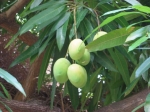
Mango trees grow up to 35–40 m (115–131 ft) tall, with a crown radius of 10 m (33 ft). The trees are long-lived, as some specimens still fruit after 300 years. In deep soil, the taproot descends to a depth of 6 m (20 ft), with profuse, wide-spreading feeder roots; the tree also sends down many anchor roots, which penetrate several feet of soil.
The leaves are evergreen, alternate, simple, 15–35 cm (5.9–13.8 in) long and 6–16 cm (2.4–6.3 in) broad; when the leaves are young they are orange-pink, rapidly changing to a dark, glossy red, then dark green as they mature. The flowers are produced in terminal panicles 10–40 cm (3.9–15.7 in) long; each flower is small and white with five petals 5–10 mm (0.20–0.39 in) long, with a mild, sweet odor suggestive of lily of the valley. There are over 400 varieties of mango, many of which ripen in summer while some give double-crop. The fruit takes three to six months to ripen.
Guava
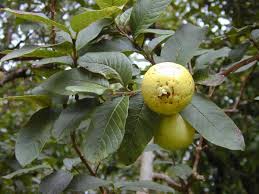
Guava is most suitable for the hot and dry climate. It can tolerate both heat and frost. Only small plants are affected by the same court. It can be grown in all soil types, but Sandy loam soil is ideal for it. Allahabadi famous varieties of guava in India, whiting, red Gudewala, Spotted, bitter gourd, guava Bedana and apples.
Emblica
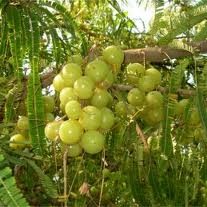
The tree is small to medium in size, reaching 8 to 18 m in height, with a crooked trunk and spreading branches. The branchlets are glabrous or finely pubescent, 10–20 cm long, usually deciduous; the leaves are simple, subsessile and closely set along branchlets, light green, resembling pinnate leaves. The flowers are greenish-yellow. The fruit is nearly spherical, light greenish yellow, quite smooth and hard on appearance, with six vertical stripes or furrows.
Ripening in autumn, the berries are harvested by hand after climbing to upper branches bearing the fruits. The taste of Indian gooseberry is sour, bitter and astringent, and it is quite fibrous. In India, it is common to eat gooseberries steeped in salt water and turmeric to make the sour fruits palatable. It is also used to straighten hair.
Jackfruit
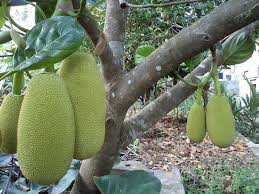
The jackfruit (alternately jack tree, jakfruit, or sometimes simply jack or jak; Artocarpus heterophyllus) is a species of tree in the Artocarpus genus of the mulberry family (Moraceae). It is native to parts of South and Southeast Asia, and is believed to have originated in the southwestern rain forests of India, in present-day Kerala, coastal Karnataka and Maharashtra. The jackfruit tree is well suited to tropical lowlands, and its fruit is the largest tree-borne fruit, reaching as much as 80 pounds (36 kg) in weight, 36 inches (90 cm) in length, and 20 inches (50 cm) in diameter.
Lemon
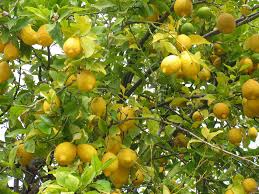
The lemon (Citrus × limon) is a small evergreen tree native to Asia, and the tree’s ellipsoidal yellow fruit. The fruit is used for culinary and non-culinary purposes throughout the world, primarily for its juice, though the pulp and rind (zest) are also used in cooking and baking. The juice of the lemon is about 5% to 6% citric acid, which gives lemons a sour taste. The distinctive sour taste of lemon juice makes it a key ingredient in drinks and foods such as lemonade.
Papaya
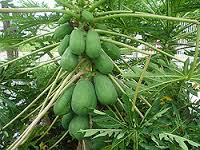
The papaya is a large, tree-like plant, with a single stem growing from 5 to 10 m (16 to 33 ft) tall, with spirally arranged leaves confined to the top of the trunk. The lower trunk is conspicuously scarred where leaves and fruit were borne. The leaves are large, 50–70 cm (20–28 in) in diameter, deeply palmately lobed, with seven lobes. Unusually for such large plants, the trees are dioecious. The tree is usually unbranched, unless lopped. The flowers are similar in shape to the flowers of the Plumeria, but are much smaller and wax-like. They appear on the axils of the leaves, maturing into large fruit – 15–45 cm (5.9–17.7 in) long and 10–30 cm (3.9–11.8 in) in diameter. The fruit is ripe when it feels soft (as soft as a ripe avocado or a bit softer) and its skin has attained an amber to orange hue.
Blackberry
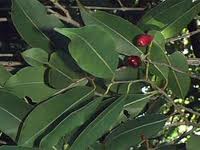
The blackberry is an edible fruit produced by many species in the Rubus genus in the Rosaceae family, hybrids among these species within the Rubus subgenus, and hybrids between the Rubus and Idaeobatus subgenera. What distinguishes the blackberry from its raspberry relatives is whether or not the torus (receptacle or stem) ‘picks-with’ (i.e. stays with) the fruit. When picking a blackberry fruit, the torus does stay with the fruit. With a raspberry, the torus remains on the plant, leaving a hollow core in the raspberry fruit. The term ‘bramble’, a word meaning any impenetrable scrub, has traditionally been applied specifically to the blackberry or its products, though in the United States it applies to all members of the Rubus genus. In the western US, the term caneberry is used to refer to blackberries and raspberries as a group rather than the term bramble.
Pomegranates
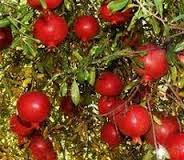
Pomegranates is grown as a fruit crop plant, and as ornamental trees and shrubs in parks and gardens. Mature specimens can develop sculptural twisted bark multi-trunks and a distinctive overall form. Pomegranates are drought-tolerant, and can be grown in dry areas with either a Mediterranean winter rainfall climate or in summer rainfall climates. In wetter areas, they can be prone to root decay from fungal diseases. They can be tolerant of moderate frost, down to about −12 °C (10 °F).